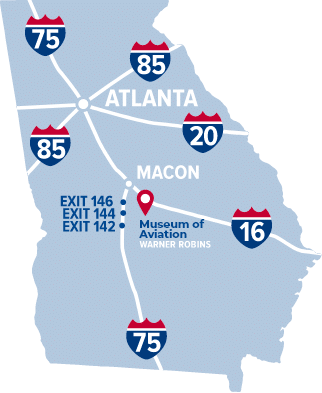The two-place T-33 jet was designed for training pilots already qualified to fly propeller-driven aircraft. It was developed from the single-seat F-80 fighter by lengthening the fuselage slightly more than three feet to accommodate a second cockpit.
Originally designated the TF-80C, the T-33 made its first flight in March 1948. Production continued until August 1959 with 5,691 T-33s built. In addition to its use as a trainer, the T-33 has been used for such tasks as drone director and target towing, and in some countries had a camera installed in the nose and additional equipment in the rear cockpit.
The T-33 is one of the world’s best known aircraft, having served with the air forces of more than 20 different countries for over 40 years. Some are still in use throughout the world.
Over the years T-33s have been assigned to Robins AFB for various missions. Warner Robins Air Logistics Center was responsible for communication, navigation and armament systems on all USAF T-33s worldwide. The T-33 on display was delivered to the USAF in September 1954 and assigned to the 3800th Air University Wing, Maxwell AFB, Alabama. It served with a number of units with the United States before retiring from the 144th Fighter-Interceptor Wing (ANG), Fresno Air Terminal, California, in May 1988. It was shipped to the Museum in 2004 for display.











